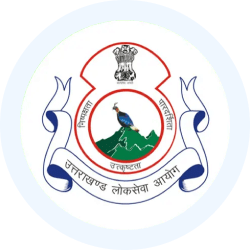UKPSC (Uttarakhand) Exam > UKPSC (Uttarakhand) Notes > Uttarakhand State PSC (UKPSC): Preparation > Soils of Uttarakhand
Soils of Uttarakhand | Uttarakhand State PSC (UKPSC): Preparation - UKPSC (Uttarakhand) PDF Download
| Download, print and study this document offline |
Please wait while the PDF view is loading
Page 1 Soils of Uttarakhand Soils of Uttarakhand do not form a compact block. They differ from valley to valley and slope to slope according to different ecological conditions. Soils of Upper Bhagirathi-Alaknanda are of mixed origin ie glacial and fluvio-glacial origin. Soils of the talus fans and the flat terraces are silty to clayey loam and are very fertile. Alpine zone soils are mostly granitic sandy loam. The brown forest soils are widely distributed in many parts of the region. These soils are normally loamy in the A-horrizon while the clay fraction increases in the sub- soil layers. Katil (land on forest margins), soils are stony, comletely immature and extremeley poor. Soils of Upraon (land on hill-sides), lands are gravelly and sandy loams. They are light brown or brown in colour. Talcon (land in valley bottoms), soils are brown in colour with clayey loam texture. On account of their stony texture, thin layer, heavy erosion and poor fertility, the soils of Garhkum region in general, are very hard to work upon. These soils, though poor for other crops, have proved very suitable for potato cultivation and horticulture. Kaushik has divided soils of Uttarakhand in following Pedo-ecological zones. Pedo-ecological zones Altitude (in m) Climato- vegetal zone Soil types Bhabar and Tarai Below 300 Humid Tropical Alluvial Siwalik and Duns 300-900 Humid Tropical Alluvial Lower Bhagirathi- Alaknanda zone 900- 1800 Warm Temperate Brown Forest Upper Bhagirathi- Alaknanda zone 1800- 3000 Cool Temperate to Cold Brown deciduous and grey coniferous forest soil 3000- Mountain medow and glacial Page 2 Soils of Uttarakhand Soils of Uttarakhand do not form a compact block. They differ from valley to valley and slope to slope according to different ecological conditions. Soils of Upper Bhagirathi-Alaknanda are of mixed origin ie glacial and fluvio-glacial origin. Soils of the talus fans and the flat terraces are silty to clayey loam and are very fertile. Alpine zone soils are mostly granitic sandy loam. The brown forest soils are widely distributed in many parts of the region. These soils are normally loamy in the A-horrizon while the clay fraction increases in the sub- soil layers. Katil (land on forest margins), soils are stony, comletely immature and extremeley poor. Soils of Upraon (land on hill-sides), lands are gravelly and sandy loams. They are light brown or brown in colour. Talcon (land in valley bottoms), soils are brown in colour with clayey loam texture. On account of their stony texture, thin layer, heavy erosion and poor fertility, the soils of Garhkum region in general, are very hard to work upon. These soils, though poor for other crops, have proved very suitable for potato cultivation and horticulture. Kaushik has divided soils of Uttarakhand in following Pedo-ecological zones. Pedo-ecological zones Altitude (in m) Climato- vegetal zone Soil types Bhabar and Tarai Below 300 Humid Tropical Alluvial Siwalik and Duns 300-900 Humid Tropical Alluvial Lower Bhagirathi- Alaknanda zone 900- 1800 Warm Temperate Brown Forest Upper Bhagirathi- Alaknanda zone 1800- 3000 Cool Temperate to Cold Brown deciduous and grey coniferous forest soil 3000- Mountain medow and glacial Alpine zone 4500 Alpine soils Alluvial soil of Tarai, deposited by rivers coming from Himalaya is highly fertile but they are marshy land, thus not easy to reclaim for agriculture. After independence migrant Sikh community worked hard to reclaim this land and today agriculturally this region is highly developed. Soil of Bhabar although falls in alluvial category, but having large boulders, cobbles and pebbles deposited due to sudden break of slope by rivers, it is not suitable for cultivation. Soil of both these regions is categorized as azonal soils. One the unique character of soil inUttarakhand is lack of development of soil profile. In hilly areas regular erosion of soil do not permit, development of profile, while in valley, and plains the profile can not evolve as soil is depoited here after transportation from elsewhere.Read More
Related Searches



















